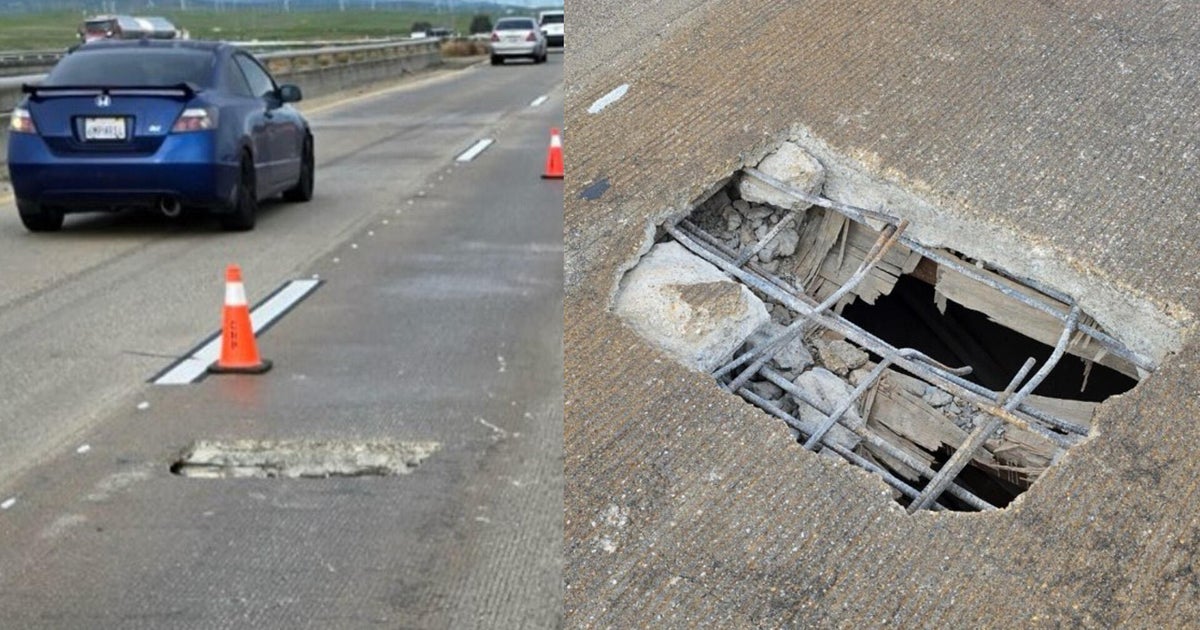'Nonprofit' Stanford Hospital Among Top U.S. Hospitals Profiting Off Patients
PALO ALTO (CBS SF) -- Stanford Hospital and Clinics in Palo Alto and Sutter Medical Center in Sacramento are two of the most profitable U.S. hospitals, yet both hospitals carry the "nonprofit" designation, according to a new study.
The study, published this week in the journal Health Affairs, found that out of the top 10 most profitable American hospitals in 2013, seven were nonprofits.
Two of the top three most profitable hospitals were located in California: Sutter Medical Center in Sacramento, which made a profit of $271.9 million, and Stanford Hospital and Clinics in Palo Alto, which made a profit of $224.7 million.
The two California hospitals were only out-profited by Gunderson Lutheran Medical Center in La Crosse, Wisconsin, which made $302.5 million in profits, according to the study's authors.
That same year, the majority of U.S. hospitals lost money caring for patients.
According to the National Bureau of Economic Research, tax-exempt status was originally granted to some American hospitals because those hospitals were usually run by religious or philanthropic organizations to serve the poor. Since they provided a public benefit, were financed by donations, and generated little if any income, some hospitals were tax-exempt.
With the Patient Protection and Affordable Care Act of 2010, hospitals wanting to qualify for tax exemption as a nonprofit entity must meet four additional requirements. They must conduct a community needs assessment every three years, establish and disclose a financial assistance policy, refrain from billing individuals eligible for financial assistance more for emergency or other medically necessary care than the amounts generally billed to patients with Medicare or private commercial insurance, and they must refrain from engaging in certain collection methods.
The study's authors have been looking at these trends for years, and a report they published last year in Health Affairs journal, stated that 50 hospitals in the U.S. with the highest markup of prices over their actual costs charged some patients more than 10 times the costs allowed by Medicare, which is a markup of more than 1,000 percent for the same medical services.
The researchers said the high markup rate was attributable to a combination of hospital charges lacking regulations and a lack of market competition in the U.S.
Gerard F. Anderson, Ph.D, a professor in the Department of Health Policy and Management at Johns Hopkins University's Bloomberg School who authored the study with Ge Bai, Ph.D, CPA, an assistant accounting professor at Washington and Lee University, believes that most highly-profitable hospitals tend to have monopolies, or near monopolies, in their communities, allowing them to charge whatever they like to patients, or private insurers.
The researchers found that highly-profitable hospitals were charging out-of-network patients, the uninsured, as well as auto and workers' compensation insurers far more than allowed by Medicare.
Private insurers, Anderson said, keep monopoly hospitals in their networks in order to attract customers.
"Either they're doing something right or they are taking advantage of a flawed payment system. Perhaps the most important question is what are they doing with all of that money?" Anderson said.
The researchers analyzed the net income from patient care services at 3,000 acute care hospitals during the 2013 fiscal year and found that while the majority of hospitals incurred small losses from patient care, hospitals that were part of a hospital system were more profitable, and as Bai puts it, "some hospitals are obtaining outrageous profits."
The most profitable hospitals had the highest patient care markup rate, the authors found.
In 2013, Medicare and Medicaid's fee-for-service model incentivized hospitals to conduct more tests and procedures in order to earn more money, according to the researchers.
But Bai says change may be on the horizon, since a new model, a value-based model, is being phased in over the coming years and is designed to reward hospitals whose patients have the best outcomes.
"The system is broken when nonprofit hospitals are raking in such high profits," Anderson states, adding that the country's most profitable hospitals should lower their prices or put those profits into community services.
In response, James Hereford, Chief Operating Officer at Stanford Health Care, sent the following statement:
"In analyzing hospital finances, it is important to differentiate between academic medical centers and other providers. There are important differences in the mission, scope of activities and case mix of Stanford Health Care versus a community hospital. As a nonprofit, we reinvest continuously in our care delivery system to support the level of services Stanford Health Care provides."
Hereford said the hospital has a very high case mix index because Stanford Health Care treats patients with "the most complex needs." This advanced level of care by highly trained specialists "is simply more expensive to provide than what is available in a community hospital."
He said the hospital provides ongoing financial support for medical discovery, is a teaching institution and supports research activities in collaboration with the Stanford School of Medicine.
Other reasons for the high profit, Hereford said, is that, "We serve a high-cost area with growing needs. Stanford is located in the San Francisco Bay Area, one of the most expensive labor markets in the country. Strong financial performance enables us to attract and compensate the level of highly trained staff needed for tertiary care."
He said patient services volume has increased by 80 percent between 2009 and 2013 and emergency room visits have increased by 18 percent during that same five-year period.
Another major use of funds in 2013, Hereford said, was the ongoing construction of a new 820,000-square-foot Stanford Hospital. He said in 2013, $300 million was invested in capital projects. The new Stanford Hospital is projected to open in 2018.
Additionally, Hereford notes that "In 2013, Stanford Health Care's community benefit investment was $199 million; in 2015, it was $266 million."
Sutter Medical Center also commented on the study.
Bill Gleeson, Sutter Health Vice President of Communications, told CBS San Francisco:
"Our initial analysis suggests that the authors missed $240 million of expenses which significantly overstated Sutter Medical Center, Sacramento's actual earnings. At least two other hospitals on the list—Gunderson in Wisconsin, and Norton in Louisville, KY—both part of large systems, have already identified similar inaccuracies in the study since its release yesterday. The study appears to be fundamentally flawed. Our ranking would have been much different had the authors accurately calculated expenses."
By Hannah Albarazi - Follow her on Twitter: @hannahalbarazi.



